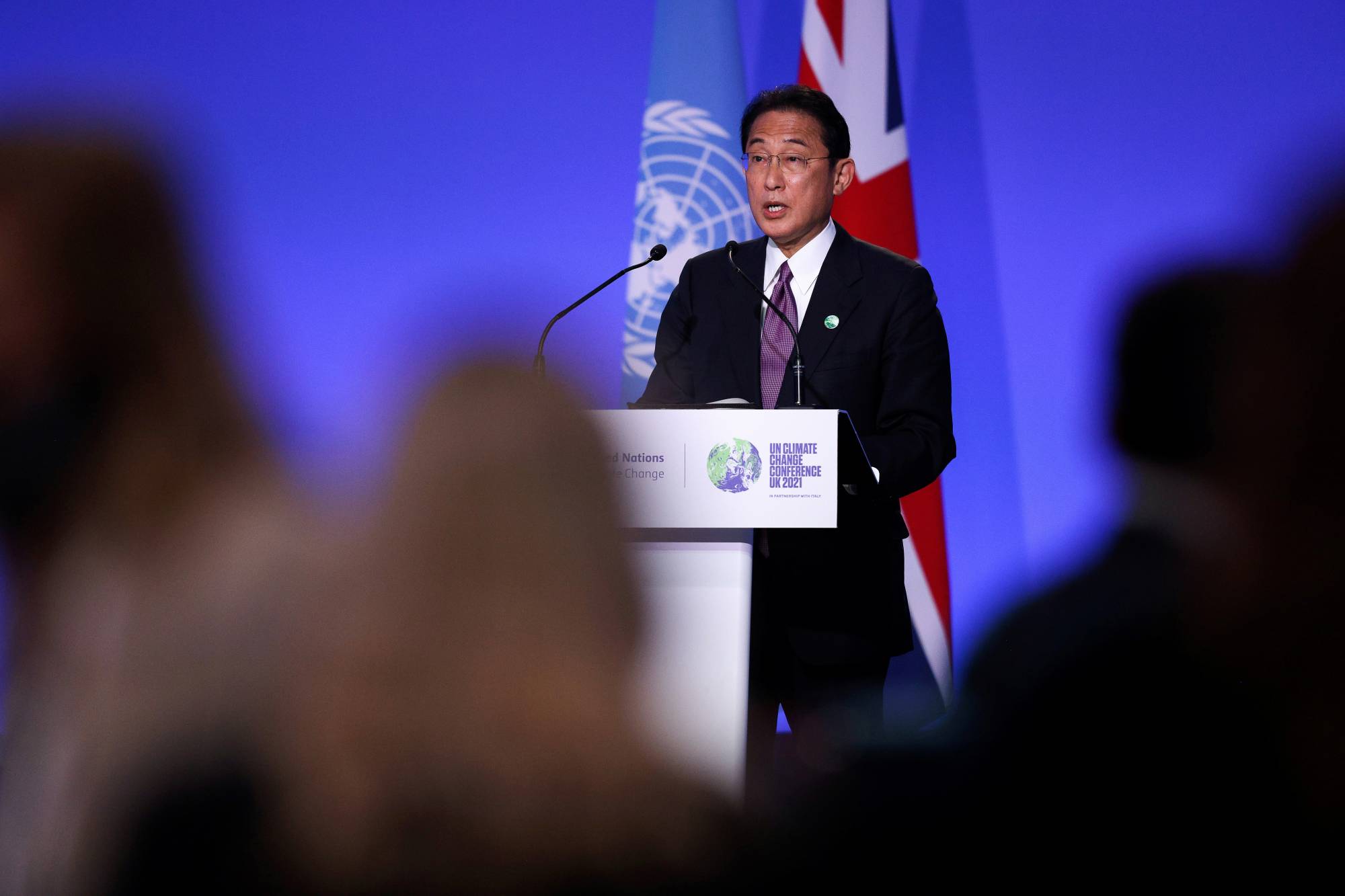In advance of COP27 next month, Prime Minister Fumio Kishida’s administration is pursuing a mix of old and new energy sources to meet Japan’s obligations under the 2015 Paris Agreement, in which nations agreed to limit global warming to no more than 2 degrees Celsius by mid-century.
It’s not yet clear what specific proposals the Japanese government will bring to the key U.N. climate conference. Before last year’s COP26 in Glasgow, Scotland, Prime Minister Yoshihide Suga, Kishida’s predecessor, announced that Japan would pursue a 46% cut in greenhouse gas emissions compared to 2013 levels by 2030 and reach carbon neutrality by 2050. The target was a sharp increase from 26%, what the world’s fifth-biggest emitter pledged in 2015.
The Kishida government’s climate change policy is essentially a continuation of the one supported by Suga, offering little that is new in terms of energy proposals to meet the Paris goals — with one important exception. Kishida, who attended COP26 after Suga’s resignation, is willing to consider the construction of advanced technology nuclear reactors, whose commercialization is many years away.



